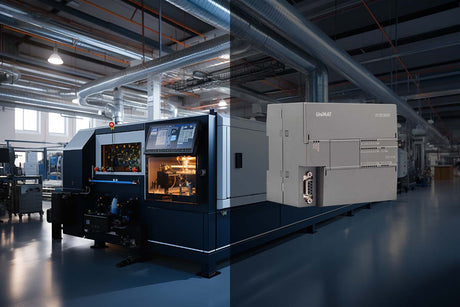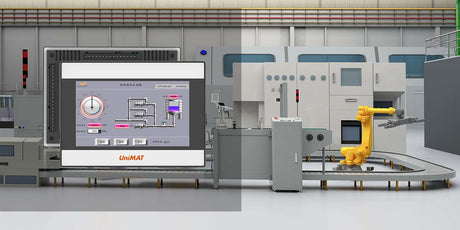If you work in industrial automation,manufacturing,or process control,you’ve likely heard the term PLC module—but what exactly does it mean?This guide breaks down the essentials of PLC modules,their types,functions,and why they’re critical to modern automation systems.Whether you're a technician,engineer,or simply curious,this article will help you understand how these compact devices power industries worldwide.

What is a PLC Module?
A PLC module(Programmable Logic Controller module)is a hardware component of a PLC system,designed to perform specific tasks such as input/output(I/O)processing,communication,or specialized control functions.Unlike traditional hardwired systems,PLC modules are modular,allowing engineers to customize systems by adding or swapping components based on application needs.Think of them as"building blocks"that work together to automate machinery,production lines,or entire factories.
Types of PLC Modules and Their Roles
PLC systems rely on different modules to handle diverse tasks.Here are the most common types:
1.Input/Output(I/O)Modules
Digital I/O Modules:Handle binary signals(ON/OFF)from devices like sensors,switches,or buttons.
Analog I/O Modules:Process continuous signals(e.g.,temperature,pressure)for precise control.
Specialized I/O:Manage high-speed counters,motion control,or PID loops.
2.Communication Modules
Enable PLCs to connect to networks(Ethernet/IP,Profibus),HMIs(Human-Machine Interfaces),or IoT platforms for data sharing.
3.CPU Module
The"brain"of the PLC,executing control logic and coordinating all connected modules.
4.Power Supply Module
Converts incoming electrical power to voltages required by the PLC system.
5.Function-Specific Modules
Include safety modules(for emergency shutdowns),temperature controllers,or pneumatic valve controllers.
How PLC Modules Work Together
A PLC system is a cohesive network of modules:
1.Sensors send data(e.g.,temperature readings)to input modules.
2.The CPU module processes this data using programmed logic.
3.Output modules execute commands,like activating a motor or valve.
4.Communication modules relay data to SCADA systems or cloud platforms for monitoring.
This modular design ensures scalability—engineers can expand systems by adding new modules without rewiring entire setups.
Key Applications of PLC Modules
PLC modules are the backbone of automation in industries such as:
Manufacturing:Assembly line control,robotic arms.
Energy:Monitoring power grids,managing renewable systems.
Water Treatment:Regulating pumps and filtration processes.
Automotive:Quality control testing,paint shop automation.
For example,an automotive plant might use analog I/O modules to monitor hydraulic pressure and safety modules to halt machinery if a worker enters a restricted zone.
How to Choose the Right PLC Module
Selecting the best PLC module for your project depends on:
I/O Requirements:Match module types(digital/analog)to sensor and actuator needs.
Environmental Conditions:Opt for ruggedized modules for extreme temperatures or vibrations.
Communication Protocols:Ensure compatibility with existing networks(e.g.,Modbus,Ethernet/IP).
Scalability:Leave room for future expansion.
Pro Tip:Unimat offer extensive PLC module libraries with detailed specifications.
Common Questions About PLC Modules
Q:Can PLC modules be replaced individually?
Yes!Modularity allows faulty modules to be swapped without shutting down the entire system.
Q:What’s the lifespan of a PLC module?
Typically 10–15 years,depending on operating conditions and maintenance.
Q:Are PLC modules compatible across brands?
Not always.Stick to modules from the same manufacturer to avoid compatibility issues.
Why PLC Modules Matter in Industry 4.0
As industries adopt smart manufacturing,PLC modules are evolving to support IoT integration,edge computing,and predictive maintenance.For instance,modern communication modules enable real-time data analytics,helping factories reduce downtime and optimize efficiency.
A PLC module is far more than a generic hardware component—it’s a versatile,customizable solution that drives precision and efficiency in automation.Whether you’re troubleshooting a system or designing a new one,understanding PLC modules empowers you to build smarter,more adaptable industrial setups.
By focusing on quality modules,proper configuration,and future-proofing,businesses can stay ahead in the fast-paced world of industrial automation.









